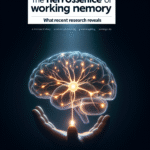Phonics and Learning Disabilities: Tailoring Approaches for Success in Reading
Introduction
In a world where literacy serves as a cornerstone for personal and professional success, the significance of effective reading strategies cannot be overstated. Yet, for many children with learning disabilities, the journey to reading proficiency can be fraught with challenges. This is where the intersection of phonics and learning disabilities comes into play—offering tailored approaches that pave the way for success in reading. Phonics, the method of teaching reading by developing learners’ phonemic awareness, can be a transformative tool for children navigating the complexities of learning disabilities.
As educators, parents, and specialists delve into this vital area, it’s crucial to understand that one-size-fits-all strategies simply don’t work. Therefore, in this comprehensive guide, we will explore how we can tailor phonics instruction to effectively support children with learning disabilities. Throughout this article, we will discuss unique insights, innovative strategies, real-world case studies, and actionable tips for making reading accessible to all.
Understanding Learning Disabilities and Their Impact on Reading
Before diving into tailored approaches for teaching phonics, it’s essential to grasp what learning disabilities are and how they affect reading abilities. Learning disabilities such as dyslexia affect the way information is processed, making reading a daunting task. Children with dyslexia might struggle with:
- Decoding words: The ability to translate written symbols into sounds.
- Phonemic awareness: Understanding and manipulating sounds in words.
- Reading fluency: The speed and accuracy with which one reads.
Case Study 1: Emma’s Journey with Dyslexia
Emma, a bright 8-year-old girl, loved stories but found reading to be a significant hurdle. After being diagnosed with dyslexia, her teachers adopted a phonics-focused reading intervention that tailored instruction to her specific needs. By incorporating multisensory approaches—such as using colored letters and manipulatives—Emma’s decoding skills improved, and her reading fluency increased dramatically within a semester.
Analysis: Emma’s case highlights how understanding a child’s unique challenges can lead to effective tailored phonics instruction. The integration of multisensory strategies not only made learning enjoyable for Emma but also empowered her to achieve success in reading.
The Power of Phonics in Overcoming Reading Challenges
Phonics instruction emphasizes the relationship between sounds and their corresponding letters. For children with learning disabilities, effective phonics practices can provide the scaffolding necessary to build their reading skills. Here are key reasons why phonics is critical:
- Structured Learning: Phonics offers children a systematic approach to decoding words, making the chaotic world of language feel more manageable.
- Confidence Building: Understanding the rules of phonics can instill confidence in struggling readers as they begin to recognize patterns in words.
- Improved Comprehension: As decoding skills improve through phonics, children can focus on comprehension rather than just trying to read words.
Implementing Tailored Phonics Approaches
1. Diagnostic Assessments
Before implementing any phonics instruction, it’s essential to conduct diagnostic assessments to understand a child’s specific strengths and weaknesses. This data-driven approach helps in tailoring instruction. Regular assessments can track progress and adjust strategies accordingly.
| Assessment Type | Description | Purpose |
|---|---|---|
| Phonemic Awareness | Tests how well children can hear and manipulate sounds | Identifying specific sound-related issues |
| Word Recognition | Measures the ability to recognize common sight words | Determine sight word proficiency |
| Fluency Assessments | Evaluates reading speed and accuracy | Monitor progress towards fluency |
2. Multisensory Instruction
Integrating multisensory instruction is particularly effective in teaching phonics to children with learning disabilities. Techniques may include:
- Visual aids: Use letter tiles, charts, or illustrations to reinforce phonics rules.
- Auditory games: Engage children in sound-based activities such as rhyming or clapping out syllables.
- Kinesthetic activities: Incorporate movement through finger tracing letters or writing in sand.
Case Study 2: Jason’s Multisensory Learning Experience
Jason, a 10-year-old with significant reading difficulties, was introduced to a multisensory phonics program. His instructor used a combination of visual aids, auditory sounds, and kinesthetic activities. Over time, Jason’s ability to decode words improved, transforming his reading experience from frustration to achievement.
Analysis: Jason’s story emphasizes the value of integrating different learning modalities in phonics instruction. By appealing to multiple senses, learning becomes more engaging and effective, especially for children with diverse learning needs.
The Role of Reinforcement and Practice
Regular practice and reinforcement play an essential role in mastering phonics. Here are several effective strategies for providing that reinforcement:
- Daily Reading: Encourage daily reading habits, starting with familiar text and gradually increasing difficulty.
- Phonics Games: Incorporate interactive games that focus on phonics skills, maintaining engagement while reinforcing learning.
- Peer Tutoring: Pair students to work together, allowing stronger readers to support their peers in phonics exercises.
Case Study 3: Peer Tutoring Success
In a classroom with mixed-ability groups, a peer tutoring program was established. Students with stronger phonics skills were paired with those with learning disabilities. This collaborative learning resulted in improved phonics skills for both groups, as well as enhanced social interactions.
Analysis: Peer tutoring fosters an inclusive learning environment, allowing students to learn from one another. By providing opportunities for collaboration, students develop not only phonics skills but also empathy and communication skills.
Leveraging Technology for Phonics Instruction
In today’s digital age, technology can be a valuable asset in tailored phonics instruction. Various educational apps and online resources offer interactive phonics games and exercises that cater to diverse learning needs. Here’s how technology enhances phonics learning:
- Interactive Learning: Children are often more engaged when learning through technology, which can provide immediate feedback and rewards.
- Personalized Learning Pathways: Many apps tailor lessons to the user’s current skill level, allowing for personalized progress.
- Accessible Resources: Online platforms make phonics resources readily available to educators and parents alike.
Case Study 4: Technology in the Classroom
A teacher introduced a phonics app in her classroom designed for students with learning disabilities. The app offered phonics exercises tailored to individual learning paces. As a result, students, including those who struggled with traditional methods, found unique success in mastering phonics concepts.
Analysis: Integrating technology into the classroom demonstrates how digital tools can enhance traditional learning methodologies. By providing interactive and adaptive learning experiences, technology opens up new avenues for success in reading.
Creating a Supportive Learning Environment
To maximize the efficacy of tailored phonics instruction, it’s crucial to foster a supportive learning environment. This can include:
- Encouragement: Celebrate small victories to build confidence in young learners.
- Collaborative Efforts: Involve parents and caregivers in the phonics journey, equipping them with strategies to support learning at home.
- Mentorship Programs: Establish mentorship within schools, connecting older students with younger peers looking for guidance in reading.
Case Study 5: Parental Involvement
A school implemented a program that educated parents on phonics strategies they could use at home. By extending learning beyond the classroom, students experienced consistency in their phonics practice. Parents reported significant improvements in their children’s confidence and reading skills.
Analysis: Engaging parents in the phonics learning process can have a substantial impact. Building a bridge between home and school reinforces learning, making it easier for children to thrive.
Conclusion
In conclusion, the key to unlocking reading success for children with learning disabilities lies in the tailored approaches of phonics instruction. By understanding the unique challenges these children face and implementing effective, evidence-based strategies—such as multisensory learning, regular reinforcement, the use of technology, and creating supportive environments—we can foster an inclusive, engaging, and successful reading experience. As we champion the cause of phonics and learning disabilities, let us remember that every child has the potential to read and succeed. By committing to personalized instruction, we pave the way for brighter futures filled with stories waiting to be read.
FAQs
1. How does phonics help children with learning disabilities?
Phonics helps children with learning disabilities by providing a structured method to decode words and understand the relationship between letters and sounds, which builds their reading confidence.
2. Can phonics instruction be adapted for older students?
Yes, phonics instruction can be tailored for older students by incorporating more advanced phonics concepts and relevant reading materials, ensuring engagement with their interests.
3. What are some effective phonics programs for children with learning disabilities?
Effective programs may include Wilson Reading System, Orton-Gillingham approach, or Lindamood-Bell, each providing structured, multisensory learning experiences.
4. How important is parent involvement in phonics education?
Parent involvement is critical, as it reinforces skills learned in school and provides a support system that enhances children’s learning experiences.
5. What should I do if my child is struggling with phonics?
If your child is struggling, consult with their teacher for tailored resources and support, consider tutoring, and explore multisensory approaches to learning phonics.
By tailoring our approaches to phonics for children with learning disabilities, we can open up the world of reading—transforming challenges into triumphs as every child finds their voice amidst the pages of a book.
















